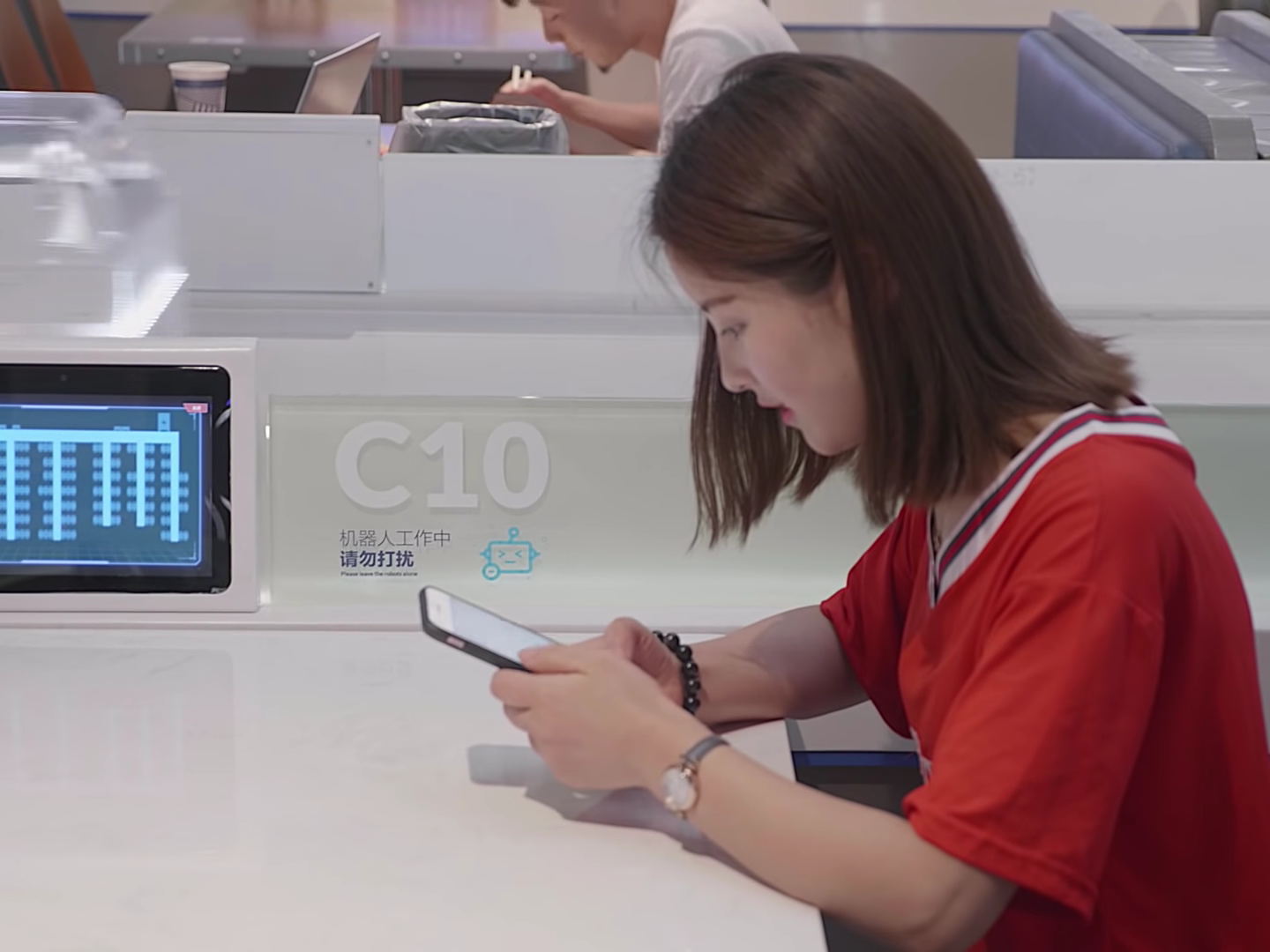At Alibaba’s Shanghai restaurant, forget everything you were taught about having your phone out at the table – you’ll need it to call the robots that serve you.
Fresh seafood restaurant Robot.He is located in Alibaba’s Hema Supermarket, and a combination of conveyor belts, a robotic arm, and mobile carts on waist-high counters handle almost all of the waitstaff ‘legwork.’ They’re guided by a software system that uses customer-submitted QR codes to figure out seating, ordering, and payment, via the Hema app.
But it isn’t as anti-social as it sounds: As the customer walks around the supermarket choosing their fresh seafood meal, humans are there to do what they do best – interact, assist, and of course, cook. By taking out the labor cost of food runners and waiters and keeping some crucial human employees, Alibaba hopes to make its restaurant more cost-efficient. The result is a fascinating and interactive dining experience.
Here’s a look at the way an order is placed at Robot.He – the restaurant where diners are served almost entirely by robots:
When a customer arrives, they're still greeted by a host or hostess.

The customer uses a check-in kiosk to find a table.
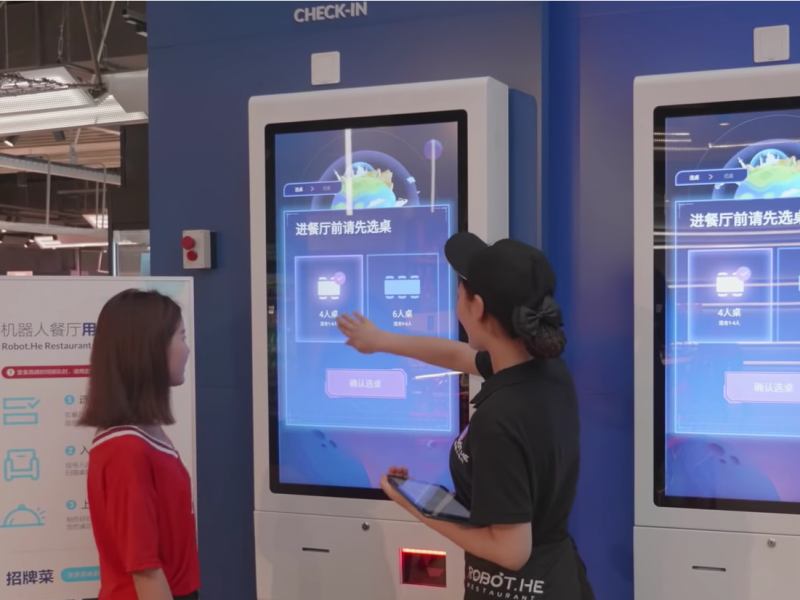
Staff is available to walk them through the steps the first time around.
A QR code on the customer's app is then scanned to the kiosk to inform the software system where they'll be sitting.

From there, the customer is free to go about the supermarket choosing the fresh seafood they want the cooks to prepare.
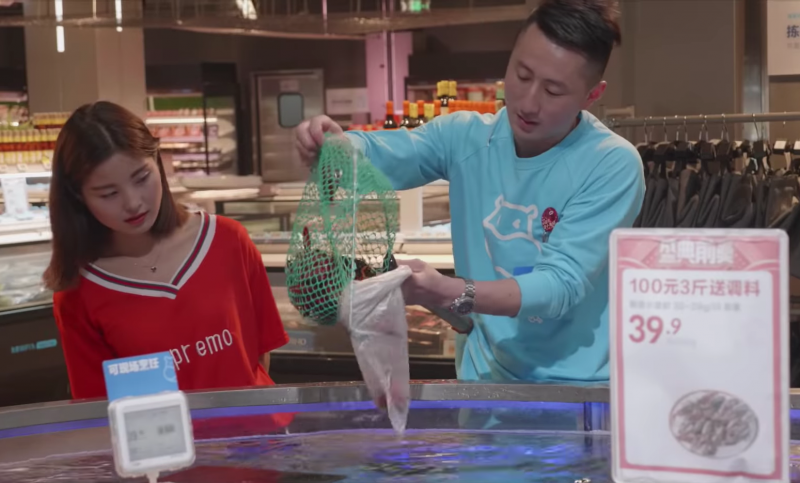
The customer can take the bagged items to checkout once they're ready, where they once again pull up their QR code to be scanned.

Once the order is complete, the employee at the checkout counter puts the bagged items on a hanger attached to a conveyor belt.

And the belt takes the bag to a robotic arm that transfers it to a refrigerator so it's kept cool until the customer is seated and the food is ready to be prepared.

The customer, meanwhile, is seated at the table they chose once it's ready.
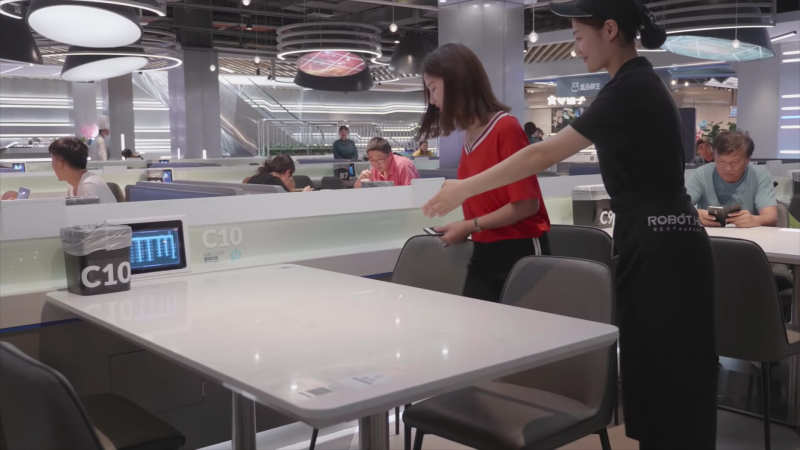
While they wait, a QR code at the table allows the customer to order additional items, like rice.
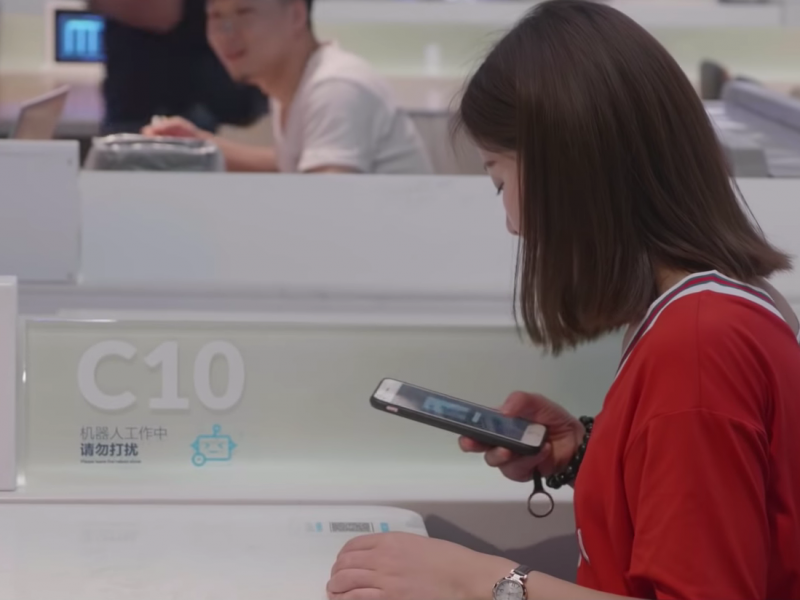
The menu for these additional items is right there on the app.
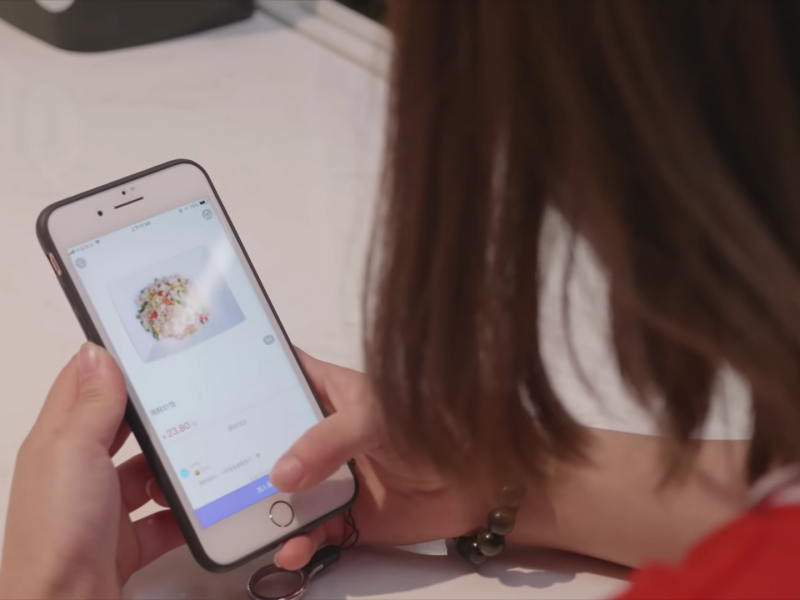
The kitchen staff places the food — the fresh items bought at the supermarket and the additional items from the app — on carts.
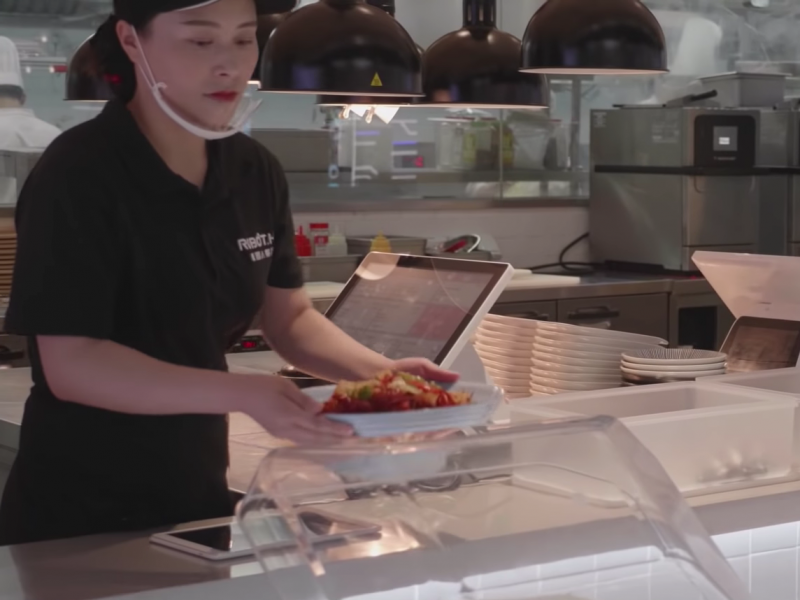
And the readied carts navigate around a highway of surfaces according to the location specified by the customer's QR code.

All the food goes straight to the customer's table.
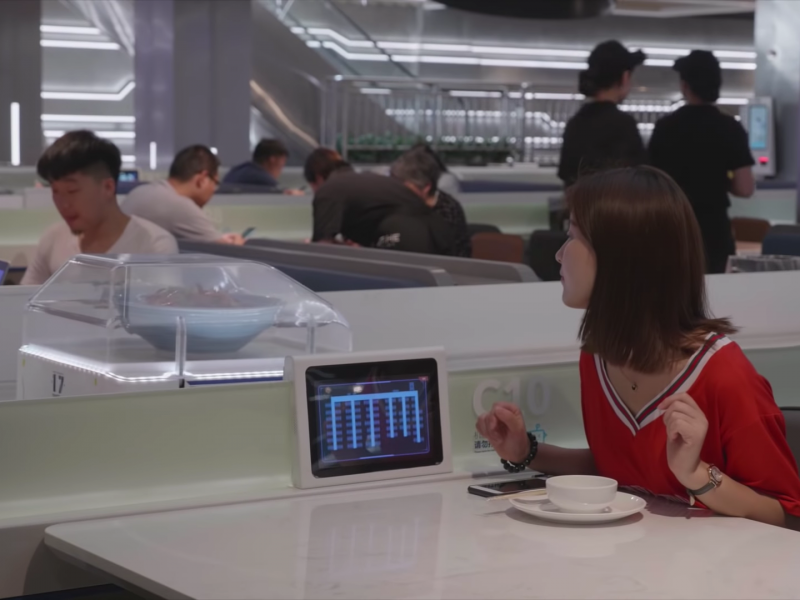
The pod opens so the customer can retrieve their meal, and the transaction is complete.
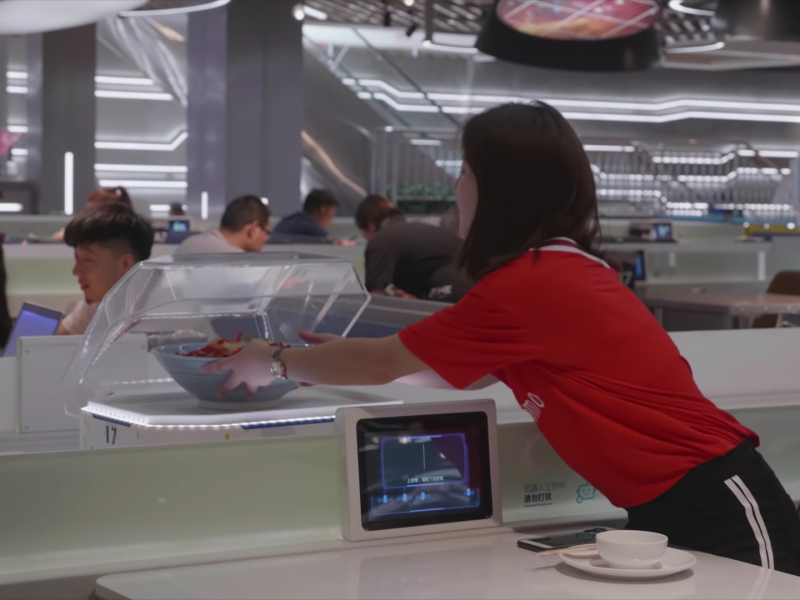
Last step: Enjoy a fresh seafood meal, hand-picked and straight from the market.
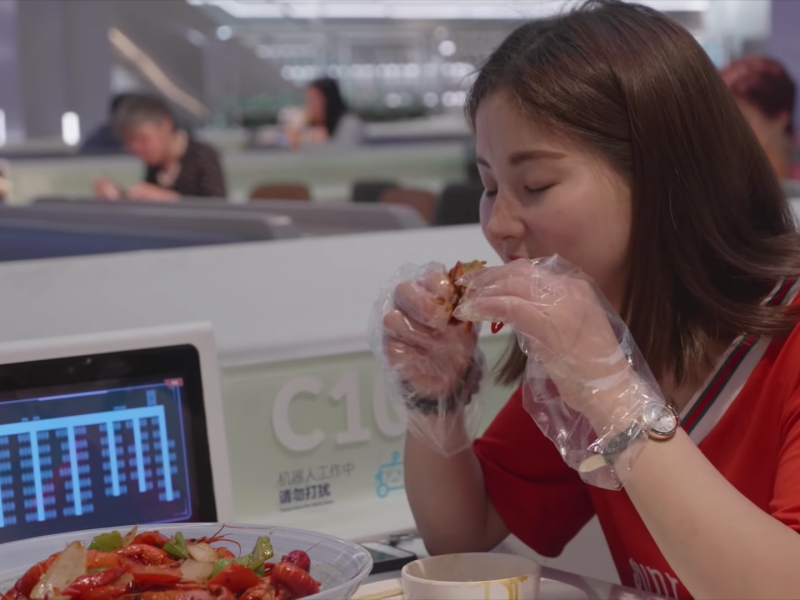
You can watch Alibaba's whole video here.

